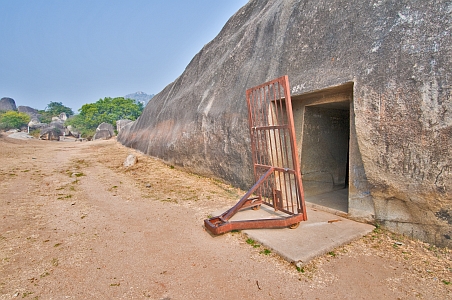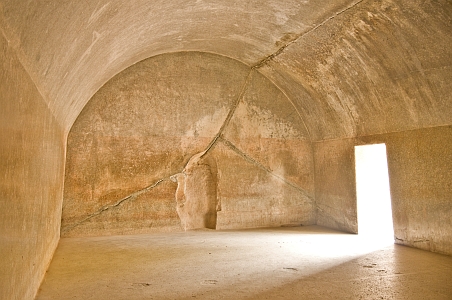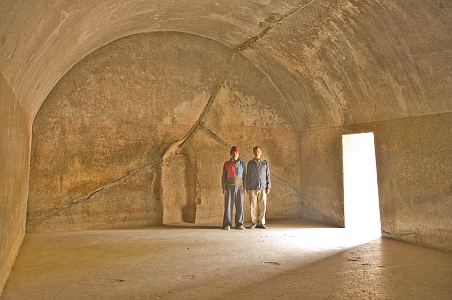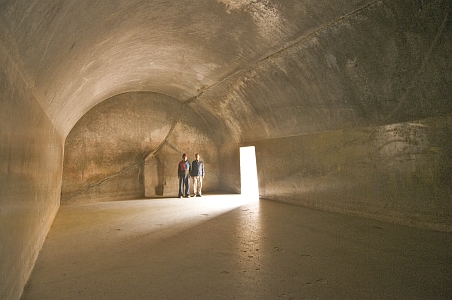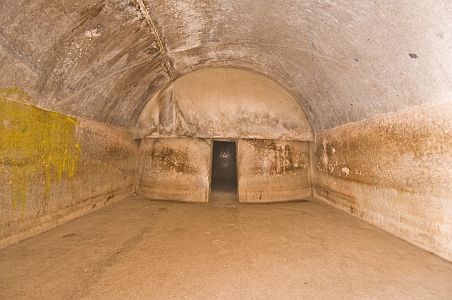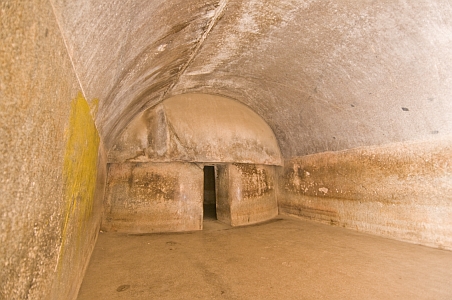The Barabar Caves - 3: Inside the Sudama Cave
India is full of surprises, and today was to prove no different. Whilst I was walking around the large hummock of rock that contains the Karan Chopar cave, a small gentleman in a blue jersey and red woolen hat appeared as if out of nowhere: this was the current caretaker of the caves, and most importantly, he held the keys to the steel gates.
He was most surprised to encounter a foreigner visiting the Barabar Caves, but very pleased to be engaged to show me around the site. Not only did he have the official keys that would give me entrance beyond the locked steel gates, but he also knew the location of nearby Nagarjuna Hill, and would guide us there after first showing me the caves here.
Located on the other side of the dual-ridged rock hummock (see here for 1993 photo) are two caves, the Sudama and the Lomas Rishi. I visited the Sudama cave first. The name 'Sudama' relates to a poor friend of Krishna: a local legend suggests that he once stayed in this cave. However, the Ashokan inscriptions dedicate this cave to the Ajivikas. The Sudama is the earliest cave on the site, dating back to 252 BC, the 12th year of Ashoka's reign. It has a plain rectangular entrance door, whilst the entrance to the adjacent Lomas Rishi cave is beautifully ornamented with Buddhist carvings - we shall see this on Page 4.
The entrance to the Sudama cave has a shallow entrance porch, leading to a rectangular passageway that in turn leads to the main barrel-vaulted chamber.
The main chamber is split into 2 rooms: the larger outer chamber, and a smaller inner sanctum. To photograph the outer chamber, I used the Nikon D300 mounted on a tripod, and utilised the available light that came in through the entrance passage. This technique was not possible in the smaller inner sanctum, so I did not take any photos there. In fact, it was so dark in there that it was almost impossible to see, and the flashlight that I had with me did little to illuminate the innermost chamber.
The wall between the two chambers has a central doorway, and a curious upper hemi-spherical section that is curved and bowed towards the center to represent the roof of the local bamboo and thatch beehive huts that used to be common in this part of Bihar. The walls and ceilings of both chambers are completely smooth, and provide the remarkable echo mentioned on page 1.
Please visit Page 4 of the Barabar Cave series..

